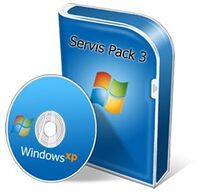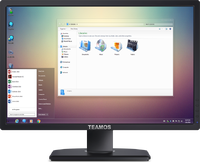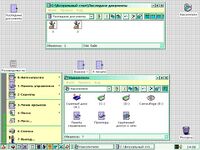CrustyWindows:About


Crusty Windows (also called bootleg Windows), known as говносборки (lit. "shit builds") in Russian, are illegally modified builds of the Microsoft Windows operating system, typically developed by eccentric individuals who wish to see their favorite OS and franchises collide or just want to include every driver and program in existence in their OS installs. Many of these bootlegs are severely unstable, barely install at all, have nonsensical themes and wallpapers, are hysterically poorly made, or are just simply impossible to find because nobody in their right mind downloaded them.
Crusty Windows come in a wide variety of languages, most commonly in English, Arabic, and Russian, and so far, at least one has been created in every continent (except Antarctica) - from the good ol' USA, to the exotic lands of the Great Wall, to the first traditional wonder of the ancient world, or even the land where maple syrup is consumed every day - there is always a Windows bootleg that represents someone out there.
While most bootlegs of Windows are free, a few cost money - for example, Radiant OS 11, which requires a TeamOS VIP subscription to download.
History
The Beginning

The first bootleg that was created for Windows was a transformation pack called BedOS, released in early 2000. This OS required an existing install of Windows 95 or Windows 98 to function, and had releases in both Russian and English. It laid the foundations for many bootleg creators, as it added a custom theme, icons, and several additional drivers and programs, as well as removing some bloat from the existing install. It was a very important OS for kicking off the Russian bootleg scene and thus the Windows bootleg scene as a whole.
Several different versions of BedOS were released, including 2.0, 72214-1 (the first English version), and 3.0, themed after Mac OS X.
The name of the OS is a pun, as when romanized, the name would be "BadOS". It is also one of the very few bootlegs distributed as shareware.
The second earliest bootleg known to exist is one based on Windows XP before it was even released, known as Whistler Build 2531. Based on a Release Candidate 2 Build of XP, this bootleg also features many things seen commonly, such as additional backgrounds, registry tweaks, cracked activation, and more. Hilariously, this ISO seems to have been created out of spite towards the beta scene of the time, who were known for hoarding betas and being picky about quality.
nLite Era
nLite is a tool for customizing Windows 2000, Windows XP or Windows Server 2003 installation media. It can do a variety of things, like integrating updates (like DriverPacks, Kels' All-in-One CPL Bonus, VistaDriveIcon, Windows Media Player 11/Internet Explorer 8, and many more), unattended installs (used to pre-activate the OS, and change the registration information), integrating custom themes with the UXTheme patch, and even add in their own post-setup routines and drop custom files to certain locations (most notably, the Windows directory, and sometimes, Documents and Settings and other places), which is contained in the $OEM$ folder. Because of all the things nLite can do, lots of modders use it to create the finishing bits of their creation.
The earliest releases of nLite go back to 2004, and the earliest mods known to use the tool can be traced back to 2005 and 2006. Examples are Windows AlphaBetas (based on Windows 2000, nLite 1.0 beta 6 on Windows 2000), TinyXP (nLite 1.0 RC3 on Windows XP Professional SP2) and Windows XP Gamer Edition (nLite 1.0 RC7, late 2006). The latest version of this program is 1.4.9.3, and can still be downloaded today. It has not been updated for more than a decade, as the creator has switched to making a tool named NTLite, which has the same purpose, but supports Windows 7, 8.x, 10 and 11. It has also enjoyed some use by modders, with bootlegs like Windows 7 Infinium Edition (Spanish version, NTLite 1.0.0 on Windows Server 2012 Standard) using it.
Despite not being updated for more than 10 years, nLite has continued to be the most popular program for making Windows XP bootlegs While the number of Windows XP modifications have shrunk drastically since the end of support, some modders continue to bootleg it. An example of this is Windows XP Super-Small Lite by EVO K410i CFW.
vLite Era
vLite is a tool for customizing Windows Vista installations. vLite is similar to its predecessor, nLite. As with nLite, vLite's capabilities were used by many modders to finish off their bootleg. The earliest examples of vLite being used go back to TinyVista (vLite 1.2 beta on Windows Vista SP1). There are also bootlegs like Windows Vista Kagome Titanium SP2 Edition (vLite 1.2 on Windows Vista Ultimate SP2) and Windows Vista Alienware 2010.
vLite was used on most Windows Vista bootlegs. It was also used on Windows 7 RTM bootlegs, such as Windows 7 Apple Logo. vLite did not get many updates and was much more shortlived than its predecessor, nLite. The next iteration of the software would be NTLite.
Despite the harsh criticism of Windows Vista, modifications of Vista were still made. As with Windows XP, Vista bootlegs are still being made today, but they are much more rare and much, much less interesting and more questionable.